Depending on who you talk to, 2006 was either a very good year
for aviation, or a year of much foreboding.

 This was a year... in which
general aviation continued to make much progress, but saw the
specter of user fees threatening it at every corner.
This was a year... in which
general aviation continued to make much progress, but saw the
specter of user fees threatening it at every corner.
This was a year... in which the F-22 and the
F-35 flew, but the reality of budget tightening threatened both
programs.
This was a year...in which the Airlines made
progress, slow though it may be, from the brink of bankruptcy to
the brink of profitability -- however at the cost of their
employees, stockholders, and the trust of the American public.
This was a year... in which business aviation
continued to thrive, but also a year in which it continued to take
flak from a media that didn't understand it, an FAA that didn't
value it, and the airlines who covet their prosperity.
This was a year... actually a great year for
sport aviation, as the sport pilot community saw blue skies for the
first time in a long while, and new airplanes filled the sky at a
rapidly increasing rate... but the costs of entry into the LSA
community still seems to be way too much for the average Joe to
handle.
This was a year... in which the space shuttle
got back to business, the commercial spaceflight industry made
incremental progress, and plans for the future on both sides of the
aisle moved forward... but to all intents and purposes the progress
has been marginal, and far less than what people expected by
now.
So, okay... 2006 was a mixed bag and it's bloody hard to
determine which stories or story topics truly line up at the top of
a list that we've decided to limit to a solid dozen entities --
presented in quasi-alphabetical order. But warts and all, this is
what we've come up with -- the stories that made a splash in 2006
-- while also containing some promise (good and bad) for the
future. Read them, think about them, and let us know what YOU
think.
FAA vs Controllers... A Sign Of Things To Come
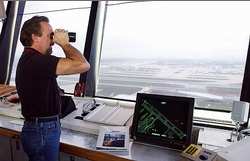 In a year typified by
some pretty harsh rhetoric, virtually unlimited political
skirmishing, and verbal wars propagated through the media; the 2006
battles between the Federal Aviation Administration and the
National Air Traffic Controllers Association were some of the most
vociferous and (frankly) bizarre. While neither side was all right
and neither side was all wrong, the turbulent war of words and
intermittable political one-ups-manship couldn't help but make one
think that this was two groups of folks who just had no idea about
how to talk to each other.
In a year typified by
some pretty harsh rhetoric, virtually unlimited political
skirmishing, and verbal wars propagated through the media; the 2006
battles between the Federal Aviation Administration and the
National Air Traffic Controllers Association were some of the most
vociferous and (frankly) bizarre. While neither side was all right
and neither side was all wrong, the turbulent war of words and
intermittable political one-ups-manship couldn't help but make one
think that this was two groups of folks who just had no idea about
how to talk to each other.
On the FAA side, there was what should have been an easy sell to
the public in regards to issues involving controller pay, benefits,
and working conditions. There is no question that the lot of the
NATCA member has improved dramatically over the last few years as a
function of the current contractual environment. Their pay is up,
their benefits have increased, and when you compare the average
wage of a controller to the average wage across the country, it's
hard to feel bad for folks pulling down some pretty good money for
what most admit to be a fascinating job. But... the FAA didn't make
their case very well, preferring instead to demonize the
controllers, while pretty much ignoring a number of solid points
NATCA (when you looked below all the fluff and bluster) made when
they weren't crying poor.
 On the NATCA side, the
controllers did as poor a job as the FAA did, in stating their
case. They further complicated their lot with aggressive rhetoric
that went "over-the-top" more times than we can count. The public
counts on controllers being cool, calm, reasonable, and considerate
personnel... but a number of the NATCA press releases were long on
hyperbole and short on reason -- and a few were just plain
nuts.
On the NATCA side, the
controllers did as poor a job as the FAA did, in stating their
case. They further complicated their lot with aggressive rhetoric
that went "over-the-top" more times than we can count. The public
counts on controllers being cool, calm, reasonable, and considerate
personnel... but a number of the NATCA press releases were long on
hyperbole and short on reason -- and a few were just plain
nuts.
The sad part of this particular war of words is that there is no
question that the controllers have a number of quite legitimate
grievances concerning working conditions, equipment issues, FAA
communications issues, and the rules under which they try to keep
the American public safe in the sky. The FAA, as well, had
excellent points to make about the cost of fielding the air traffic
system, and the fact that controllers (by and large) were
reasonably well-paid -- but somehow the message was lost in the
FAA's reticence to bulldoze through the war of words and actually
reach a dialogue with NATCA. As a result, the FAA resorted to
bureaucratic sleight of hand to force the controllers into a
position that should have been avoidable if either side had quit
playing games and sat down to talk... for real. The worst part of
this skirmish is not that neither side won a whole lot, or even
lost a whole lot, but the strong perception that there's been some
tremendous damage done in the ability of the FAA to communicate
with the controller community. We think that bodes nothing but
trouble for the future. Keep an eye on this issue, folks, we're
going to see trouble along these lines again.
F-35/F-22: The Return of the Super Fighters
2006 was a good year... if you're a fighter pilot. F-22 Raptors
are rolling off the line, the F-35 production prototype saw air
time late this year, and a new generation of fighters is preparing
to defend America.
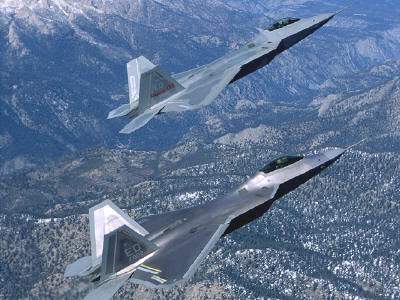
While ANN is not the kind of organization to rubberstamp
everything the military wants, there is no question that the future
needs of the military are going to be very hard to determine, and
that the best way to prepare for the future involves trying to be
as strong as possible, in order to defend this nation -- against
God knows what -- or whom.
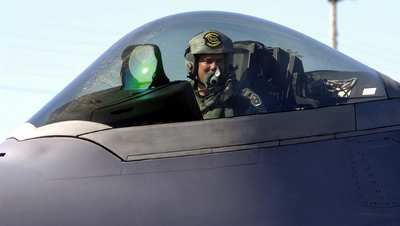
Unfortunately, budget-cut fever is already sweeping through
Congress . Changes that came as a result of the November
elections promised that those who now control the purse strings may
be inclined to do some belt-tightening -- putting both the F-22 and
F-35 production lines at risk. While this nation's need for
front-line fighters is hard to determine right now, the threats
these fighters may have to encounter in future years is even harder
to determine. There is so much instability in the world, and so
much confusion about who is an enemy and who is a friend, that it
seems that the most conservative course to a proper defense must
start with something a bit 'offensive.'
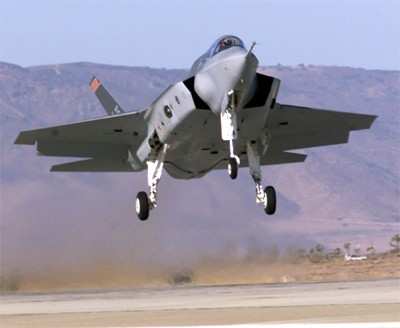
In this case, the nation has F-22s rolling out the door with
capabilities virtually unheard of less than a decade ago, and a
whole new generation of wunderbirds based on the F-35 will not only
be prepared to protect America but a number of America's allies
throughout the world. We're hoping that the myopia already espoused
by those proposing some belt-tightening is replaced by clearer
thinking as the hard work of developing these aircraft is done, and
all that remains is to build them. God help us if we find ourselves
in the kind of shooting war where either the F-22 or F-35 could
truly excel -- but God help us if we have need of the birds, and
they're simply not there.
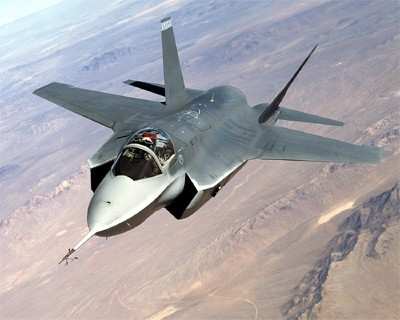
The last few years have taught us one cardinal lesson... be
prepared for anything... and the F-22 and F-35 program make for a
good start. As always, ANN will keep an eye in the world
situation and America's ability to deal with it from the standpoint
of military aviation.
LSA Industry Starts Maturing
The 'sport pilot' promise of a new generation of light sport
aircraft was long in coming. After over a decade of dickering about
the possibility of new regs and new certification standards, the
cheerful reality is that the FAA and the sport aircraft industry
have managed to come up with what appears to be a workable set of
regulations, and an opportunity to use consensus standards by
which LSA aircraft and manufacturers will have more say in their
destiny than they have ever had before.
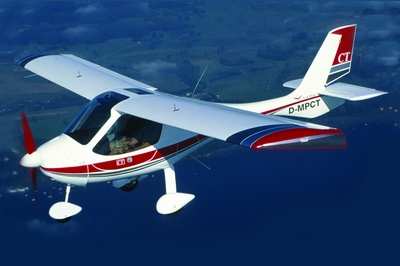
That's a great start... but it's still just a start.
Light sport aircraft are showing up in greater numbers than ever
before, and while the gross numbers are less than staggering, the
steady improvement in sales figures are one of the few truly bright
spots the sport and general aviation industry has seen in many
years.
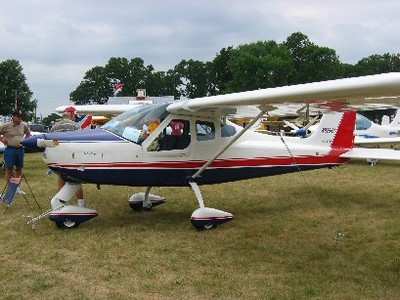
But... it ain't all grins and giggles. Yet.
The ready to fly contingent of Light Sport Aircraft
cost too darn close to $100,000 for many people to give them
serious consideration; American manufacturers are a bit dismayed at
the rate in which foreign manufacturers have dominated certain
segments of the market; and general aviation's acceptance of their
younger brothers in the light sport aircraft movement is
coming slowly and with (occasionally) great resistance.
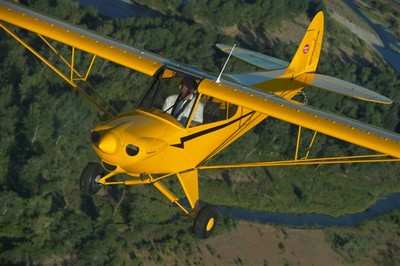
The future remains a positive one for sport pilot -- and if
the numbers improve on the manufacturing side, there may finally be
some downward (and much needed) pricing pressures that will lower
the entrance costs for the erstwhile sport flyer. The announcement
by Cessna Aircraft of their interest in pursuing LSA manufacturing,
was potentially the brightest star in the LSA universe for all
of 2006. While no one in the light sport aircraft community
relishes competing with the marketing behemoth from Wichita,
virtually every member of the community agrees that the Cessna
decision legitimized this market segment in a way that they,
collectively, could not have done by themselves.
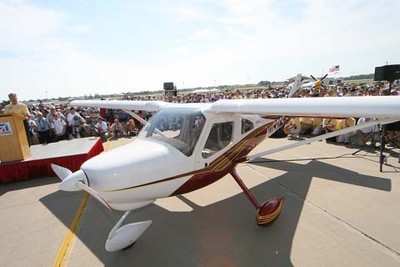
With Cessna's quite conventional, if a little uninspired, LSA's
potential production entry coming up in the 2007 market, we
see three things that may result.
- The first is that the more conservative aspects of general
aviation will finally be willing to embrace light sport aircraft
and light sport aircraft training as a true entry-level to the
general aviation world...
- The second is that sales numbers should increase across the
board based alone on the additional interest, marketing and
excitement that Cessna will generate...
- And finally, with more aircraft in the mix, the LSA economic
model will allow fixed base operations to participate in, and
utilize the sport pilot movement as a profit center in greater
numbers than we've seen before.
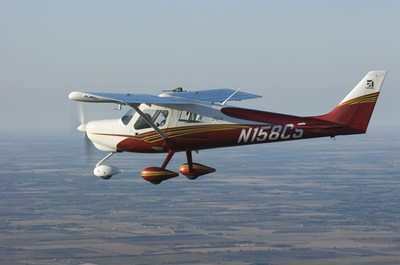
So... while we remain upbeat about the future of sport pilot and
the light sport aircraft in the next year, we see price
pressure keeping a great number erstwhile flyers out of the
market, and the limited acceptance of general aviation (of
LSA) being two of the primary stumbling blocks that we have the
potential to be overcome, in part, as 2007 proceeds.
As to the issue of foreign designs taking such a large market
share or in the American market... we're not sure if that is a
problem or a blessing -- but we see this problem as being solvable
only by American manufacturers (Cessna being chief among them) who
are willing to compete more aggressively with the very
attractive offerings that are coming in from overseas. In other
words, sport pilot, and the LSA community's future rests solely in
the hands of the LSA community-- and after having to cow-tow to the
FAA and other dominant masters of the aviation universe in the
past, this may be the most hopeful sign of all.
GA Accidents: Same Ol', Same Ol'
I am terrified with the ways that pilots insist on killing
themselves, and their hapless passengers, year after year. One of
the less pleasant rites of the morning grind at ANN is perusing the
latest accident stats in search of entries that might give us a
chance to educate others as to those issues that keep causing
perfectly good airplanes to go down -- at the hands of pilots
who insist on killing themselves in much the same way as
others have done.

Every day, the news reports are riddled with reports of plane
crashes. And while plane crashes happen far less often than do car
accidents, motorcycle accidents, or even boating accidents; the
plane crash is particularly fascinating to the media... and most of
that is, honestly, our fault.
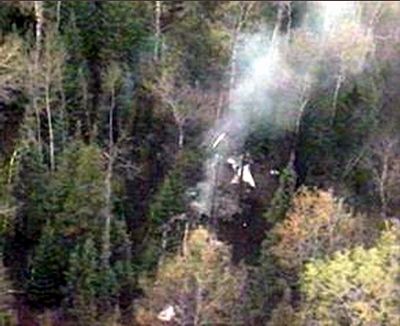
We need to quit crashing. There, I said it. It doesn't matter
what you fly... and while a number of manufacturers are too easily
disposed to blaming their competition for all manner of ills, the
plain fact of the matter is that every type of aircraft (as we
see from each daily accident report) are involved in the same
kind of accidents that are taking down virtually every other
type in the aviation universe. We still have aircraft that are
blundering off into weather for which the airplanes (and/or
pilots), are ill-equipped; we still see way too many pilots dumping
airplanes on takeoff or landing due to wholly avoidable stalls and
other errant aeronautical behavior; we still see way too many
airplanes going down due to the inattention of the pilots or
their unwillingness to practice the kind of judgment they all claim
to bring to each flight; and way too few pilots are
taking advantage of the growing and impressive opportunities
for additional training and retraining that would not only
help perfect their judgment, but fine-tune their skills in
ways that the "same ol', same ol'" causes would no longer be a
threat.
Are you with me?
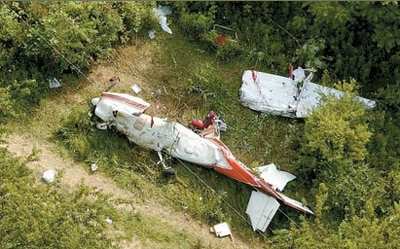
As a long-time CFI in both airplanes and rotorcraft, I have to
tell you that perusing the accident stats becomes truly
difficult. The same accident causes arise day after day. It's
actually become quite a chore to check them out each morning.
It's not that the industry isn't trying new things, hasn't been
aggressive enough about increasing the professionalism among the
flight training community, or hasn't been honest about the issues
that we all face -- its the brutal truth is that pilots are
killing themselves through thoroughly unimaginative and wholly
avoidable mistakes that have been made hundreds of times
before.
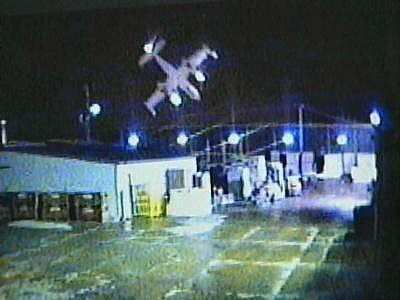
Even when complicated by outside factors, like engine failure,
there still seems to be few reasons for aircraft to wind up in as
many pieces as they do today. In the last few days I have looked at
a number of aircraft accident photos, of recent date, in which a
number of pilots went down and impacted the ground at
higher rates of speed or at more aggressive angles of impact
than the situation seemed to dictate, AND despite having plenty of
open territory in which to land, or even sufficient space to
dissipate the forces of impact in ways that would have saved those
within the aircraft. I don't get it.
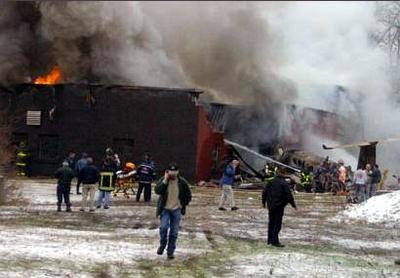
And personally, I'm sick of it. I don't doubt that many others
are as well. But like many of our brethren in the aviation, and
more specifically the flight training community, I'm at a loss as
to pinning down any new training protocol that can finally
instill the kind of judgment necessary to keep pilots from making
the same dumb mistakes, exercising the same level of stupidity,
or thinking through an emergency circumstance effectively
enough so that a bad situation is made less of a problem than it
already is.
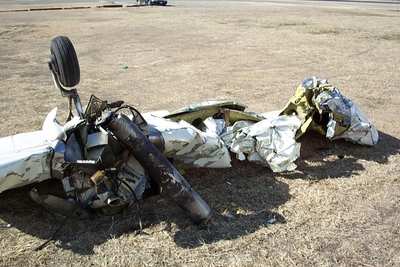
So... I'm going to leave this one up to ANN's readership, and
ask you all some simple questions: what aren't we teaching
pilots what we need to, and how do we instill the basic good
judgment necessary to keep good pilots from pushing their
aircraft into bad circumstances? I, for one, will still look
to each morning's accident statistics with dread... and if this
industry is going to make significant progress both for its own
sake, as well as a critical member of the nation's
transportation infrastructure, we have got to clean up our act and
quit killing ourselves in such thoroughly
ridiculous, unimaginative and AVOIDABLE ways.
What say you?
 NTSB Final Report: Cozy Cub
NTSB Final Report: Cozy Cub ANN FAQ: Contributing To Aero-TV
ANN FAQ: Contributing To Aero-TV Classic Aero-TV: Seated On The Edge Of Forever -- A PPC's Bird's Eye View
Classic Aero-TV: Seated On The Edge Of Forever -- A PPC's Bird's Eye View ANN's Daily Aero-Linx (04.29.25)
ANN's Daily Aero-Linx (04.29.25) ANN's Daily Aero-Term (04.29.25): Execute Missed Approach
ANN's Daily Aero-Term (04.29.25): Execute Missed Approach





















